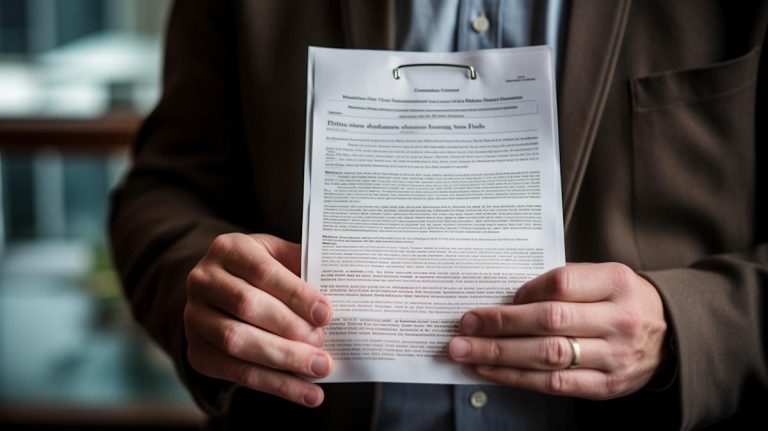SmartAsset and Yahoo Finance LLC may earn commission or revenue through links in the content below.
Inheriting a retirement account can be complicated.
With a retirement account that you opened, you’re referred to as the original owner. You can contribute to this portfolio, manage it as you see fit, and leave the money in place subject only to required minimum distributions (RMDs) in some cases. When you inherit a retirement account, the rules change. You cannot make new contributions and, depending on your relationship to the original owner, you may need to withdraw this money within 10 years of receiving it.
With an inherited account, the most important distinction is between “designated beneficiaries” and “eligible designated beneficiaries.” An eligible designated beneficiary has far more leeway to manage the inherited account as they see fit, with potentially significant tax implications.
For example, say that your husband has passed, leaving you his 401(k) with $615,000 in it. As a spousal beneficiary, you have a broad range of options for how you can manage this money. And if you need guidance specific to your situation, you can always consult with a financial advisor.
Inheriting a tax-advantaged retirement account is subject to different rules than inheriting a standard investment portfolio. Most notably, you cannot make additional contributions to this account. Beyond that, the IRS has rules for how long you can leave this money in place based on which category of heir you fall into: spousal beneficiaries, eligible designated beneficiaries or designated beneficiaries.
Readers should note that we will discuss the rules for accounts inherited in 2020 and later, as those rules were changed in the SECURE and SECURE 2.0 Acts. These rules also apply to inherited Roth accounts, even though a Roth portfolio is typically exempt from RMD rules.
Spousal beneficiaries are considered a subcategory of eligible designated beneficiaries. You are a spousal beneficiary if the retirement account belonged to your spouse at the time of their death.
If you are a spousal beneficiary, you have three options. You may:
-
Take RMD distributions from the account, based on either your life expectancy or the original owner’s life expectancy
-
Withdraw the entire amount within 10 years (the 10 Year Rule)
-
Roll the account into your own IRA
The availability of these options can depend on the status of this retirement account at the time of your spouse’s death. Rolling inherited funds into your own IRA will not change the rules of that account. You can continue making contributions to the IRA as usual, regardless of the inherited assets. Consider speaking with a financial advisor about your specific case. The right financial advisor can help you navigate the rules and execute your strategy.
An eligible designated beneficiary is someone who meets one of a handful of specific qualifications. This includes:
-
The spouse of the deceased (see above)
-
A minor child of the deceased
-
A disabled or chronically ill individual
-
An individual no more than 10 years younger than the deceased
If you are an eligible designated beneficiary other than a spouse, you have the following options:
You cannot roll this account into another IRA. If you withdraw the funds under the 10 Year Rule, you must take out the assets and trigger a tax event.
Designated beneficiaries are all heirs who are not considered eligible designated beneficiaries. Put another way, if you do not meet one of the categories above, you are a designated beneficiary. These heirs must follow the 10 Year Rule, meaning that they must withdraw all assets from the inherited account within 10 years of inheriting it.
Inheriting a retirement account raises tax issues. This is by design, since the IRS wants to ensure that tax-advantaged portfolios are emptied and taxed without simply being handed off from generation to generation. As explained by financial and insurance advisor Lucas Barcelo, founder of Thrivin’ Life, “you have a few solid options [and] the best path for you is going to be determined by your current situation… For example, your age, your tax bracket, and your expected income in retirement to name a few.”
A financial advisor can always help you determine and manage your tax liability.
Here, you are a spousal beneficiary with $615,000 in an inherited 401(k). While you cannot make additional contributions to this account, you have a broad range of options for managing it. This includes:
As a spousal beneficiary, you may roll your husband’s entire 401(k) into an IRA that you own. This is, said Barcelo, “by far the easiest (and usually smartest) move.”
If you roll the money into a traditional IRA, this rollover will not trigger a tax event. That means that, in the immediate future, this can be an effective way to manage taxes. Rolling the money into a Roth IRA will trigger a tax event in the form of conversion taxes, as you will need to pay income taxes on all money rolled into a Roth IRA. Here, you would expect to pay an estimated $180,514 in conversion taxes if you rolled the money over all at once, potentially leaving you with about $434,486 in the Roth IRA.
Once the money has been put in an IRA for which you are the original owner, you can continue to make additional contributions with qualified money.
If you put the money into a traditional IRA, it will be subject to RMDs based on your life expectancy. You will need to begin taking taxed distributions at age 73 or 75 depending on your current age. (For ease of use, we will refer to the current age of 73 in this article.)
Alternatively, you can leave this money in place. If you do so, you are free to manage the 401(k) based on your own financial plan. You will then be required to take RMDs based on either your life expectancy or your husband’s life expectancy, meaning that you must take RMDs either when you turn 73 or when he would have.
These minimum distributions will be taxed. The exact amount will depend on how much is in the account when you begin taking distributions. For example, say that you are currently 73 and you begin taking distributions immediately. You would be required to take approximately $23,207 in minimum distributions. With $75,000 in current income, that would give you about $98,207 in combined income, and $13,446 in total federal income taxes.
Whether you use your or your husband’s life expectancy tables to make RMDs, once you begin taking distributions, you will need to continue doing so until the account is emptied. Depending on your specific circumstances, you might also need to empty the account within 10 years regardless of the current status of your RMDs.
As a spousal beneficiary, you have the option of taking either required minimum distributions or use the 10 year rule. Depending on the circumstances, this can allow you to keep your money in place even past when RMDs would usually begin.
Barcelo explained: “In the scenario [where] the deceased spouse was not currently taking RMDs, the surviving spouse can choose to delay taking funds for up to 10 years (at which point the entire account must be liquidated or rolled over into the survivor’s IRA) even if in that 10 year time, the surviving spouse has RMD obligations on their own retirement accounts.”
This means that you can use an inherited retirement account to leave funds in place even after you begin taking money from your other accounts, potentially up to age 73 or 75 depending on your individual circumstances.
If the deceased had already begun taking RMDs, Barcelo said, then the account will remain subject to minimum distributions. “If RMD’s do not fully drain the account in the 10 year time, then when that time comes, the survivor would have to roll over the balance or cash out the entirety.”
Using the 10 Year Rule, you can best minimize taxes with staggered withdrawals. Leaving the money in place will maximize your compounding returns. However, any plan in which you withdraw the money in one lump sum will also maximize your tax event. If you withdraw this money in smaller increments, one year at a time, you will reduce your tax bracket and effective tax rate, and as a result hold down your taxes. Remember, you can use this free tool if you’re interested in speaking with a financial advisor.
Inherited retirement accounts can be very tricky. If your spouse has died and left you their portfolio, one common path is to roll it into your own IRA. But if that’s not the best plan right now, you have several other options.
-
A financial advisor can help you build a comprehensive retirement plan. Finding a financial advisor doesn’t have to be hard. SmartAsset’s free tool matches you with vetted financial advisors who serve your area. You can have a free introductory call with your advisor matches to decide which one you feel is right for you. If you’re ready to find an advisor who can help you achieve your financial goals, get started now.
-
Don’t let this stuff come as a surprise. Estate planning can be a grim task, but you don’t want your loved ones having to figure out their rights and responsibilities after the fact.
-
Keep an emergency fund on hand in case you run into unexpected expenses. An emergency fund should be liquid — in an account that isn’t at risk of significant fluctuation like the stock market. The tradeoff is that the value of liquid cash can be eroded by inflation. But a high-interest account allows you to earn compound interest. Compare savings accounts from these banks.
-
Are you a financial advisor looking to grow your business? SmartAsset AMP helps advisors connect with leads and offers marketing automation solutions so you can spend more time making conversions. Learn more about SmartAsset AMP.
Photo credit: Grok
The post I Inherited My Husband’s 401(k) With $615k. How Do Handle This Money to Reduce Taxes? appeared first on SmartReads by SmartAsset.







